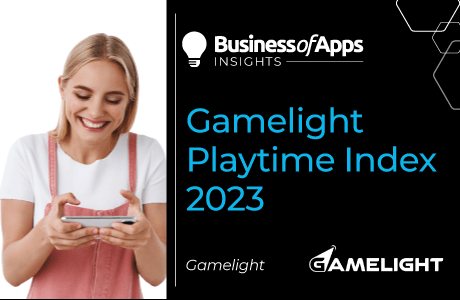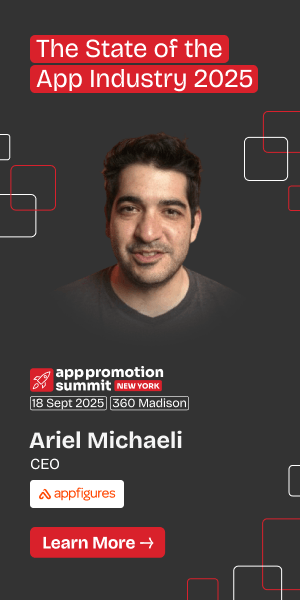Scaling a mobile game in 2025 takes more than just paid traffic or clever creatives. It means understanding your players, adapting quickly, and building strategies that connect every part of the user journey.
This guide, brought to you by Gamelight, brings together what actually works. From rewarded UA and hybrid-casual design to real-time personalisation and AI-driven decision making, we’ve combined expert insights and proven tactics into one clear roadmap. If you’re focused on acquiring and retaining high-value players, this is your starting point.
The UA landscape is changing fast
The days of relying solely on CPI campaigns are over. In 2025, success in user acquisition (UA) demands adaptability, precision, and a multi-layered approach. Players expect more. So do publishers. And so does the market.
Mobile gaming is more competitive than ever, and you have less time to make an impression. It’s not enough to acquire users: you need to acquire the right ones, engage them from the first tap, and retain them with experiences that adapt. Those who rely on old playbooks risk being left behind.
At Gamelight, we’ve partnered with top experts and industry leaders to uncover what’s working, and what’s next. This report merges all six parts of our “Mastering UA” series into a single, actionable narrative, featuring expert voices and their insights.
Rewarded UA: Engaging with intent
Rewarded UA represents a shift in how publishers think about acquisition, not just as a numbers game, but as a value exchange. It encourages players to participate more deeply by rewarding them for actions that matter, like trying a new game, completing a level, or returning regularly.
This strategy drives higher engagement, longer session times, and ultimately, stronger ROAS. Unlike traditional disruptive UA methods, rewarded user acquisition enhances the gaming experience. Players feel acknowledged, publishers earn loyalty, and the data backs it up.
It’s also a privacy-conscious solution in the post-IDFA landscape. With consent at the forefront of every interaction, and a clear user value proposition, rewarded channels avoid many of the common problems that traditional UA faces.
Niels Beenen, Strategic Partnerships Director, EMEA of Singular, puts it:
“Rewarded Advertising as a channel has again seen impressive growth in 2024. Singular customers are reaping the rewards of working with rewarded partners and I envisage strong showing in our upcoming ROI Index. We expect to see this growth continue in 2025 as Rewarded Partners will focus on growing their SOV on iOS, introducing new ad formats & working on optimising engagement algorithms. What drives performance is user engagement and rewarded channels are uniquely positioned to deliver on this front.”
At Gamelight, we use AI to match rewards to player behaviour, helping boost retention and lifetime value while keeping acquisition costs steady. Our experience tells us that users that have been acquired through rewarded channels usually convert faster and stay longer, which benefits both performance marketing and long-term growth.
Hybrid-casual games: A genre built for growth
Hybrid-casual gaming has risen to a top position in the field of mobile game design, exemplifying a major evolution. This genre appeals to both casual and hardcore players, by combining simple, accessible mechanics with deeper systems like progression, customisation, and storylines.
In UA, hybrid-casual games work in a dual way: on one hand, they attract high volumes of users through simple entry points; on the other, they manage to retain these users thanks to mid-core strategies. Thanks to this, key KPIs like CPI and LTV are fully balanced.
Hybrid-casual games leverage flexible monetisation models, as they usually integrate IAP and IAA systems. In this way, they are able to generate revenue while also keeping players retained through engaging gameplay loops. This success can be showcased through real life cases like the ones of Phase 10 and UNO, where Gamelight delivered an outstanding UA performance.
Arina Yanko, Performance Director at Whalo Games, provides perspective:
“Hybrid-casual games are designed to attract a broader audience while enhancing monetisation by combining accessible gameplay with deeper progression mechanics. To effectively engage players and drive in-app purchases, these games must offer depth that appeals to users seeking long-term progression, not just quick entertainment. While more challenging to develop, hybrid-casual games foster higher lifetime value (LTV) by appealing to dedicated players, building a community that is valuable to nurture and manage for an enriched user experience.”
Personalization: Make every experience count
In the age of algorithmic content and dynamic feeds, players expect their game experience to feel as personal as their social media. Generic marketing no longer cuts through; it must be tailored, adaptive, and emotionally relevant.
Personalization begins before install, with creative assets and messaging that speak to each user’s interests. Post-install, it continues with onboarding flows, reward timing, difficulty tuning, and content curation. The goal: reduce friction, increase satisfaction, and make players feel like the game was built for them.
It’s not just about user experience: it drives results. Personalised creatives boost clicks, adaptive gameplay lowers churn, and smart offers turn casual users into payers.
Renata Ravilova, Co-Founder and CEO of CoPostly.com, shares:
“Personalisation is the word of 2025. In every aspect of users’ experience, including marketing campaigns and their acquisition and personalised monetisation approach. In terms of creative strategy and UGC ads, that means using a variety of creators and building user personas that attract hyper-specific audiences.”
At Gamelight, real-time AI powers personalisation by tracking user behaviour and adjusting each interaction. From in-app messages to post-install targeting, we build experiences that connect, driving longer playtime, deeper engagement, and higher LTV.
IP power: Trust, nostalgia, and performance
Partnering with an iconic IP gives a UA campaign immediate momentum. Familiar characters and stories capture attention in a crowded feed and reduce the cognitive friction that often blocks installs. Players are more willing to try a game they feel they already understand.
But IPs are more than surface-level bait. When used correctly, they fuel community, deepen emotional engagement, and improve retention metrics. They provide creative teams with ready-made assets and UA teams with built-in credibility.
Done right, an IP-driven game doesn’t just outperform on launch: it stays relevant through ongoing content, cross-promotions, and event-based campaigns aligned with franchise milestones.
Ksenia Nogina, Senior PR & Marketing Manager at AAA Agency, explains:
“Collaborating with popular IPs is a powerful strategy gaining momentum. It leverages the built-in passion and loyalty that fans already have for the IP, creating a shortcut to engagement and purchase intent (usually leading to higher DAU, LTV, and retention). Besides, IP-based mobile games or the ones that involve IP-based events show a reduced reliance on paid traffic sources. So, we expect more integrations of various forms in 2025.”
AI: From buzzword to backbone
AI is no longer just a tool: it’s the infrastructure behind today’s most successful UA campaigns. It can anticipate user behaviour, test and optimise creatives in real-time, and even suggest the best timing and budget allocation across channels.
It automates, yes, but more importantly, it elevates the performance. By revealing insights faster than human teams ever could, AI lets marketers make decisions with clarity and speed. That’s critical in a market where CPMs fluctuate hourly and user preferences shift by the week.
Thomas Kriebernegg, General Manager at SplitMetrics Agency, puts it bluntly:
“I personally don’t buy into the idea that AI is here to replace marketers. What’s really happening is that marketers who know how to harness AI will start replacing those who don’t — whether due to lack of motivation or because they’re stuck in slow-moving enterprise environments with legal barriers to innovation. The real disruption will come when lean, AI-native teams outperform legacy giants with teams 10x their size.”
Live Ops: Turning moments into momentum
Live Ops has become a critical pillar in modern mobile gaming. It extends the lifecycle of users acquired through paid campaigns, helping publishers maximise the value of each install.
A successful Live Ops strategy creates rhythm and builds habits. Players don’t just come back, they come back with purpose; daily rewards, co-op events, time-limited challenges… All of these keep the game fresh and make sure users remember and return to your app.
But to truly work, Live Ops needs personalisation. Players expect content that adapts to their playstyle, timing that fits their schedule, and incentives that matter to them.
Kseniia Maiboroda, CEO and Founder at Elevatix, explains the stakes:
“Live Ops without personalisation is like putting on a show without knowing your audience. To truly drive retention and engagement, it’s not enough to launch events — they need to adapt to each player’s behavior and motivation. With AI and ML, Live Ops becomes a dynamic system that responds in real time, making players feel like the game is tailored just for them.”
Final words: The synergy behind scalable UA
If there’s one thing the Mastering UA series has taught us, it’s this: no single tactic wins the game. The real power lies in synergy:
- Use rewarded UA to scale user acquisition with intent
- Leverage hybrid-casual gameplay to broaden and deepen appeal
- Drive personalization to connect meaningfully with players
- Integrate IP collaborations to supercharge brand visibility
- Let AI optimise and adapt every campaign in real time
- Maintain momentum through Live Ops that turn installs into communities
Gamelight sits at the intersection of all six: combining cutting-edge tools, strategic insights, and a platform built for high-LTV scale. Let’s redefine what growth looks like in 2025. If you’re ready to scale smarter, faster, and further, we’re here to help.











